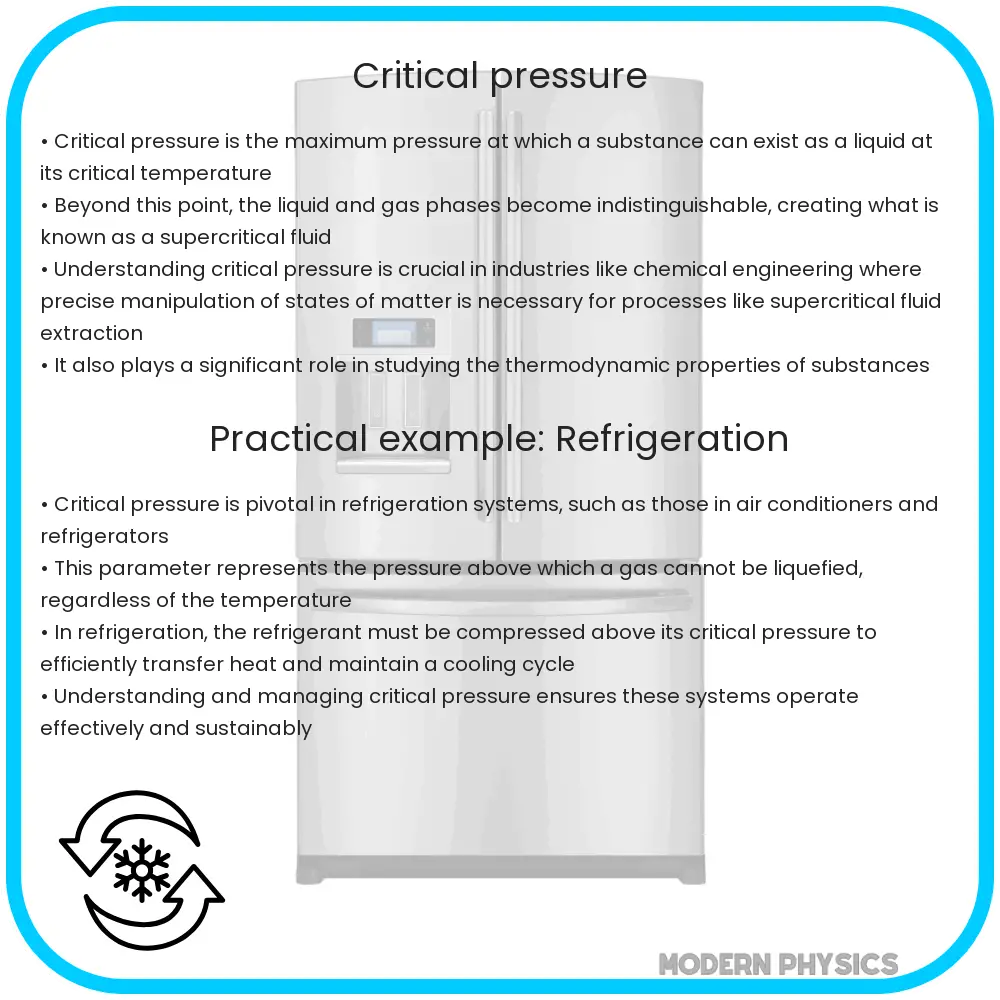Explore the fascinating world of critical pressure in thermodynamics, uncovering its applications, theory, and impact on various industries.

Critical Pressure in Thermodynamics
Understanding critical pressure is essential in the field of thermodynamics, particularly when discussing the properties of substances at their critical point. This concept is closely linked with the ideas of saturation and stability in fluids. At the critical point, the characteristics of the liquid and gas phases of a substance converge, leading to unique and significant behaviors in terms of pressure, temperature, and volume.
Saturation in Fluids
Saturation refers to the state where a liquid and its vapor can coexist in equilibrium. At this juncture, the addition of heat at constant pressure leads to the conversion of liquid into vapor without a temperature change. This process is crucial in understanding phase transitions in substances. The concept of saturation temperature and pressure becomes key in this context, indicating the specific conditions under which a substance changes phase.
Stability and Phase Transition
Stability in thermodynamics pertains to the ability of a system to remain in equilibrium under small perturbations. This concept is vital when examining the behavior of substances near their critical point. As a substance approaches its critical point, the distinction between its liquid and gas phases becomes increasingly blurred, leading to intriguing phenomena like supercritical fluids, where the substance exhibits properties of both liquid and gas.
Critical Pressure and Its Significance
The critical pressure of a substance is defined as the pressure required to liquefy a gas at its critical temperature. Beyond this point, no amount of pressure increase can revert the gas to a liquid state. This parameter is crucial in various industrial applications, including the design of equipment like pressure vessels and understanding the behavior of fluids in natural reservoirs.
Chemical Perspective
From a chemical standpoint, the behavior of substances at critical pressure involves intricate intermolecular forces. The van der Waals equation, given as \( P = \frac{nRT}{V-nb} – \frac{n^{2}a}{V^{2}} \), where \( P \) is pressure, \( T \) is temperature, \( V \) is volume, \( n \) is the amount of substance, and \( a \) and \( b \) are substance-specific constants, provides a framework to understand these forces beyond the ideal gas law.
Understanding critical pressure and its associated concepts in thermodynamics opens up a deeper insight into the behavior of substances under extreme conditions, with significant implications in both scientific and industrial domains.
Applications of Critical Pressure
The concept of critical pressure plays a pivotal role in various industrial and scientific applications. In the field of chemical engineering, it is integral to the design and operation of equipment dealing with high-pressure systems, such as autoclaves and pressure reactors. Additionally, understanding the critical pressure of fluids is crucial in the petroleum industry for enhanced oil recovery techniques and in environmental engineering for supercritical fluid extraction processes.
Supercritical Fluids
Supercritical fluids, existing above their critical pressure and temperature, exhibit unique properties that blend those of liquids and gases. These fluids can penetrate materials like a gas and dissolve substances like a liquid. This characteristic is harnessed in various sectors, including pharmaceuticals for drug manufacturing and in the food industry for decaffeination of coffee and tea.
Theoretical Implications
The study of critical pressure extends into theoretical physics and chemistry, enhancing our understanding of phase transitions and the behavior of matter under extreme conditions. It challenges and enriches classical thermodynamics and contributes to the development of new materials and substances with novel properties.
Environmental Considerations
Understanding critical pressure is also significant in environmental studies. It aids in modeling the behavior of greenhouse gases under different atmospheric conditions and plays a role in developing strategies for carbon capture and storage to mitigate climate change.
Conclusion
In summary, critical pressure is a cornerstone concept in thermodynamics, bridging the gap between theoretical understanding and practical applications. It provides insight into the behavior of substances at their critical point, leading to advancements in various fields such as chemical engineering, environmental science, and material science. The ability to manipulate and harness the properties of substances at their critical pressure has led to technological innovations and a deeper comprehension of the natural world. As research continues, the exploration of critical pressure and its associated phenomena promises to unveil further scientific and industrial breakthroughs, making it an area of continual interest and importance.
